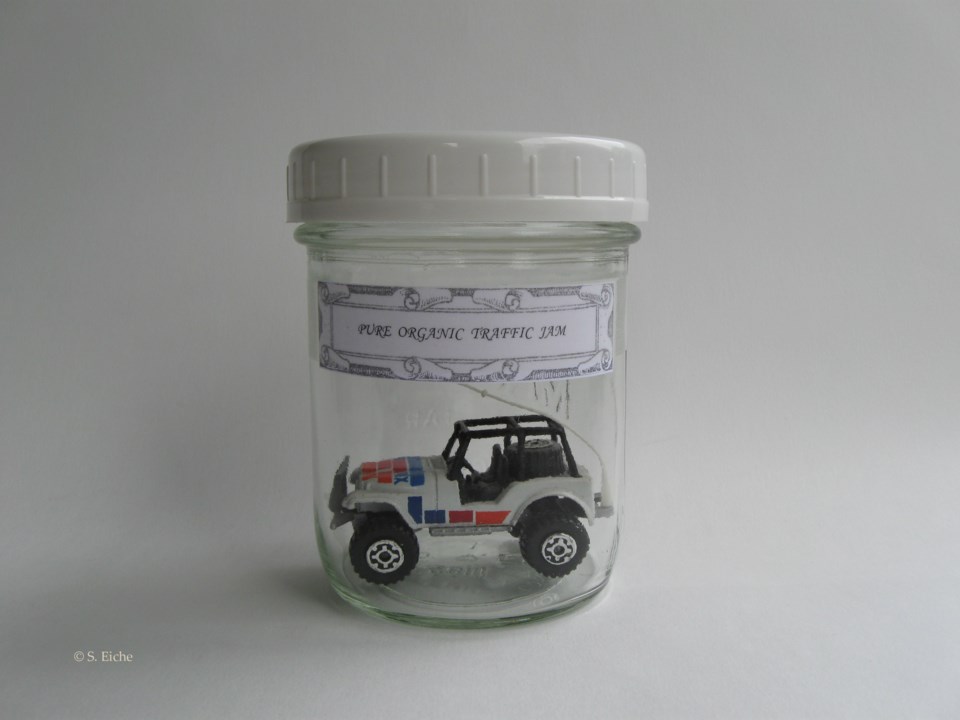If I need to drive into Vancouver I usually avoid rush hour (rush hour is a hilarious misnomer, since rush is the last thing you can do when you’re crawling along). Sometimes, though, it can’t be helped, and I end up driving when everyone else also seems to be on the road.
We have words for such times of traffic congestion. Automobiles have been around for less than a century and a half, so the vocabulary relating to traffic is relatively new. One of the most recent terms is gridlock, first found in print in 1980 in a report on the massive transit strike in New York City that year. Much older is the phrase traffic jam. It’s documented as early as 1908 and originated in the US, from where it migrated to the UK, replacing the earlier traffic block, in use around 1895.
I suppose it’s possible to have a traffic block involving only a few cars. By 1904-1905 there were 23,000 cars on the roads of Britain, a number that topped 100,000 by 1910. The whole of Canada, in 1907, had 2,130 registered automobiles, which increased to 50,000 by 1912. That year, 1912, there were 1,769 cars in Vancouver (the first gas station had opened in 1907 at the corner of Smithe and Cambie).
Now to traffic jams. The word jam, of disputed origin, is a verb meaning to wedge or press tightly together. It came to refer to a sweet preserve because the process of turning the fruit into jam involves pressing or crushing. Usually there’s nothing sweet about a traffic jam – just a lot of cars stuck close together, unable to move or travel at normal speed. But I’ve been in traffic jams where something happened that was definitely as sweet and rewarding as the jam we eat.
When you’re in a car that can’t move because the cars all around you can’t move either, you turn your attention to something else. If you’re like me, you savour the opportunity to look out the window, to study what’s merely a blur when you’re hurtling along at speed. On one of these occasions I was fascinated by a coyote ambling back and forth along Russ Baker Way, its face wearing an impenetrable smile. The coyote, I decided, is amused at us, caged up in metal boxes and immobile.
But the sweetest treat of all came just a few weeks ago. It was half past four in the afternoon, and I had to get to Marpole. We approached the Arthur Laing Bridge at a snail’s pace. Coming to a full stop next to one of the metal lampposts, I observed a bird, probably a tree swallow, circling around it. I noticed a small, round hole a few meters up the lamppost. The swallow swooped towards the hole. A second before it reached it, out poked the head of another swallow. There was a nest inside! And I’d never have known, if it hadn’t been for a traffic jam.
Sabine Eiche is a local writer and art historian with a PhD from Princeton University. She is passionately involved in preserving the environment and protecting nature. Her columns deal with a broad range of topics and often include the history (etymology) of words in order to shed extra light on the subject.



